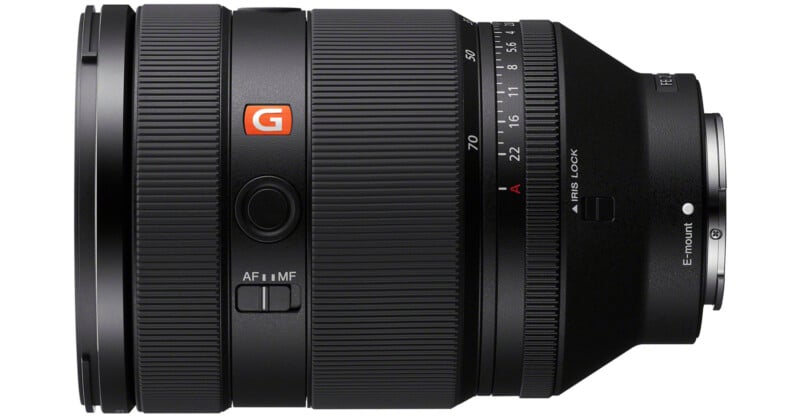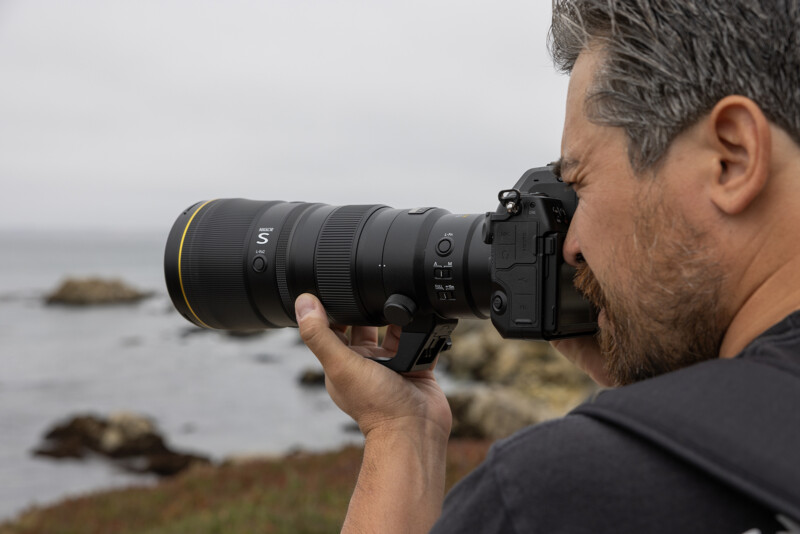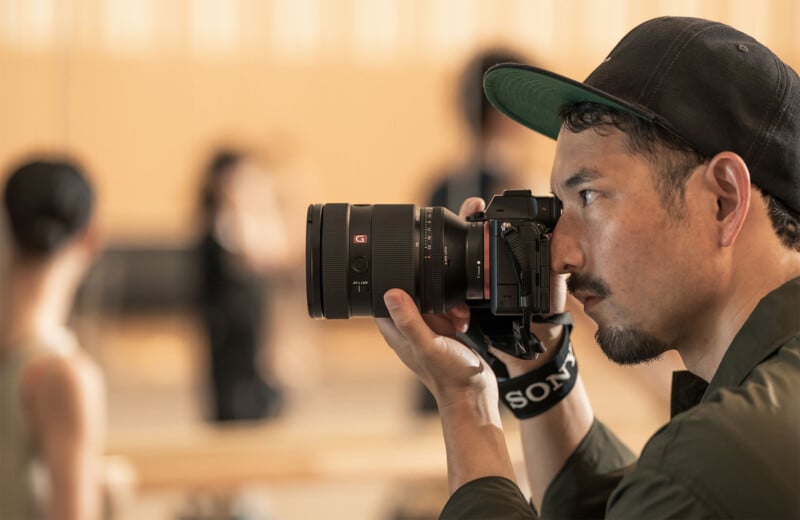![]()
With the debut of the Sony 28-70mm f/2 GM lens this week, Sony now has 56 full-frame lenses and 77 total E-mount lenses. That is a lot of lenses — by far the most among all full-frame camera systems and as the 28-70mm f/2 shows, Sony is finally free to experiment more.
The 28-70mm f/2 is an interesting lens. Canon did it first, launching the RF 28-70mm f/2 L USM alongside the EOS R in 2018, but perhaps as a proof-of-concept for the EOS R mount. The lens proved popular, of course, but Canon quickly released more “normal” lenses. Nikon did something similar in spirit with its Nikkor Z 58mm f/0.95 Noct a year after the Z6 and Z7 mirrorless cameras. Like the Canon 28-70mm f/2, Nikon treated this lens as a showcase for the sort of optical designs possible with the Z mount.
However, Sony’s optics have been relatively conservative. Excellent, sure, but rarely unusual in terms of focal length and aperture.
The company’s early years in the mirrorless space were spent trying to gain a foothold and convert people from DSLR camera systems. To encourage people to make the switch, it was vital to have the lenses they expected and not necessarily exotic, uncommon lenses like a 28-70mm f/2 GM.

Sony’s initial batch of lenses included traditional prime and zoom lenses like a 50mm f/1.4, 24-70mm f/4, and 70-200mm f/2.8. Then came the more specialized lenses, like a 100-400mm f/4.5-5.6 telephoto zoom, 200-600mm f/5.6-6.3, 400mm f/2.8, 600mm f/4, and 300mm f/2.8. These offerings arrived in lockstep with faster, more performant camera bodies and helped propel Sony into newsrooms and onto sports sidelines worldwide.
In the last few years, the company has even taken second attempts at numerous lenses, including many G Master zooms, each receiving modernization through improved image quality, much faster autofocus, and more compact designs.

Sony now has all the lenses that nearly every photographer, amateur and professional alike, expect from a full-fledged, complete camera system. There are not many lenses that are missing. Sony could stand to make a few tilt-shift lenses, but that’s a very niche segment.
Sony Has Met Most People’s Optical Needs, Now It’s Time for Extraordinary Lenses
Now that essential ground has been covered, and a fair bit of nonessential ground, too, it’s time for Sony to get weird.
The company itself said as much at its Creative Space event earlier this week when it unveiled the a1 II and the 28-70mm f/2 GM. Having been in the room in New York City, the response to the lens was significantly louder. There are a few reasons why, but chief among them is that photographers love fast zoom lenses.
“It’s our 77th E-mount lens, our 56th full-frame lens. That is a lot of glass, a lot of lenses,” Sony’s Mark Bubolo said on stage at Creative Space. “We have something for everyone, we have something for every budget. So now it’s time to do some fun things, and fun things being [the] 28-70mm.”
While the 28-70mm f/2 GM is perhaps Sony’s best example of doing something out of the ordinary with its lenses in recent years, it is not the only example. Earlier this year, the company unveiled the FE 16-25mm f/2.8 G and FE 24-50mm f/2.8 G lenses. Those are two compact f/2.8 full-frame zoom lenses that break the mold. Another unusual zoom was the FE 20-70mm f/4 G last year, a distinct focal length and aperture combination.
These four lenses released in the past two years reflect Sony’s advancing optical and autofocus system technology, which work together to enable smaller and better lenses, and the company’s newfound ability to be bold. No longer is the company chasing the legacy of the major camera companies, the Canons and Nikons of the world, but carving out its own path.
It’s a good thing, too, because Canon and Nikon have also freed themselves from past restrictions. Canon is making some unusual lenses, like the RF 10-20mm f/4 L IS STM, RF 100-300mm f/2.8 L IS USM, and RF 14-35mm f/4 L IS USM, to name just a few. As for Nikon, its Nikkor Z 28-400mm f/4-8 VR, Z 600mm f/6.3 VR S, Z 180-600mm f/5.6-6.3 VR, Z 400mm f/4.5 VR S, and Z 800mm f/6.3 VR S all stand out as lenses that help sell cameras.

That’s important for all companies, Sony included, to realize. Lenses can sell cameras — it’s not always the other way around.
I distinctly remember when Nikon launched the 14-24mm f/2.8 G ED for F mount alongside the Nikon D3 in 2007. While the D3 was a massive moment for Nikon, I knew photographers who specifically switched to Nikon to use the 14-24mm f/2.8. It was that big of a deal because it enabled photographers to make images they never could before in ways they hadn’t yet imagined. Arguably, in a market where every company offers great cameras, the importance and influence lenses is even greater now.

Could Sony hit that lofty standard with unusual and unexpected new lenses? It’s hard to say, but the company is finally, many years of work and nearly 80 E-mount lenses later, in the position to try.
If Sony wants inspiration about how to do unusual, unexpected things with lenses, they need only look at what Sigma and Tamron are up to. Not held back by the expectations that come with being a camera manufacturer with their own system — yes, I know Sigma makes cameras and is in the L-Mount alliance, but it is primarily a mount-agnostic lens company — these two companies have been creating fantastic, unusual lenses in the mirrorless era and beyond.
The Tamron 35-150mm f/2-2.8 Di III VXD, as my peers have the misfortunate of having heard me constantly say for the past two years, is one of the most fun and unusual zoom lenses I’ve ever used. As for Sigma, its 28-105mm f/2.8 DG DN Art, 28-45mm f/1.8 DG DN Art, 15mm f/1.4 DG DN Art, and 14mm f/1.4 DG DN are all great examples of unusual and fantastic lenses in the past year and change.
It’s exciting to imagine what Sony could do with its optical expertise, in-house camera system, and significant financial resources if it prioritized not filling gaps, but making lenses nobody has ever seen.
The time to chase the giants of the past is over, Sony. The time to break new optical ground has arrived. As Bubolo says, “it’s time to do some fun things,” and photographers should encourage Sony to not just have fun but get weird, too.
Image credits: Featured image made using elements licensed via Depositphotos.
